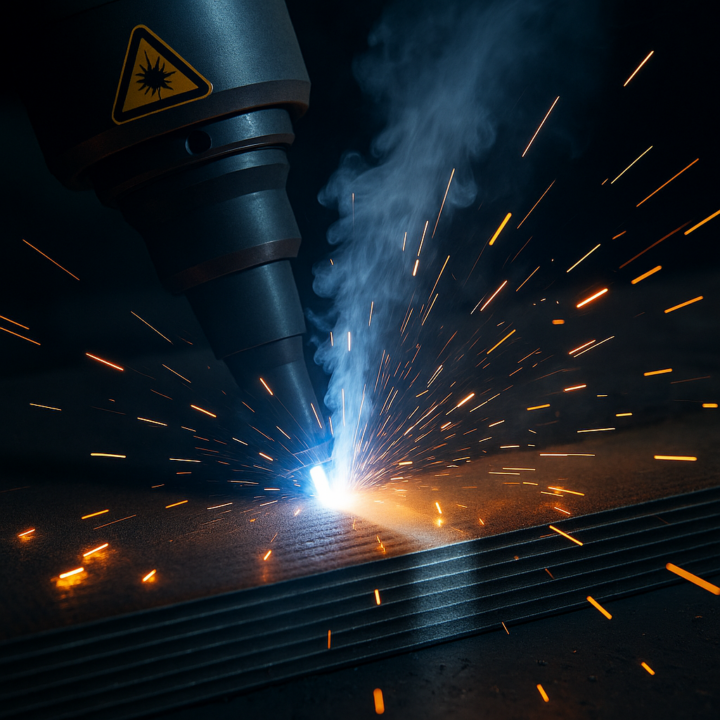Laser-Clean Precision – Powering the Future of Surface Treatment
The webinar ”Precision & Power – Unlocking the Potential of Laser Cleaning” held on 24 April brought insight to the use of laser technology in cleaning different surfaces. Three guest speakers from the German Fraunhofer-Institute demonstrated how the laser cleaning method offers exceptional precision and efficiency.
The webinar actually highlighted the very essence of the MALAMA project as its aim was to explore the potential of advanced laser-based cleaning and surface treatment technology to encourage its use, especially in the shipbuilding industry. In the webinar, the participants were demonstrated several applications and technological possibilities of laser cleaning presented by three guest speakers from the Fraunhofer-Institute located in Germany.
Senior Research Scientist Heidi Piili, Department of Mechanical Engineering at the University of Turku, chaired the webinar and gave an introduction to the day’s topic with some examples from the ongoing projects.
The first presentation by Mr. Volker Franke, Team leader Micro Material Processing, Fraunhofer-Institute for Material and Beam Technology IWS, introduced the basic concepts of laser cleaning and how to limit the cleaning effect based on the difference in the material, optical, and thermal properties. He also highlighted applications of laser cleaning in the cleaning of polymer residues on chrome plates, removal of IR reflective coating on the glasses, and removal of food residues, such as chocolate, peanut butter, etc., from stainless steel plates. Additionally, he shed light on applications of surface functionalities related to textures for tribology, antibacterial, cell growth, decoration, and joining interfaces.
Dr.-Ing. Jan Hauptmann, Head of the Division for Laser Ablation and Cutting at the Fraunhofer IWS, introduced in his presentation technologies for laser surface processing, such as ablation, structuring, cladding, hardening, and remelting. Furthermore, he elaborated how they have tested a new water flow control for high-pressure underwater laser cutting using lasers with wavelengths of 515nm and 405nm.
Dr. Alexander Blättermann, Group Leader Optical Surface Analytics, Fraunhofer Institute for Physical Measurement Techniques IPM, concentrated on presenting the advantages of fluorescence imaging in cleanliness inspection, with the detection of even the slightest impurities. Apart from this, he highlighted applications of the fluorescence measuring system for large-area inline testing of surface cleanliness with the F-Scanner family of devices, like the flange area, based on the fluorescence intensity maps.
Hand-held lasers as the game-changers
At the end of the webinar, the audience had the opportunity to ask questions. Heidi Piili reflected on what might be typical cases in which companies could identify potential for laser cleaning within their real-life processes. Advancing the use of laser technology in industry could, for example, be achieved through collaborative projects with industrial partners. Moreover, for companies seeking automated processes, laser technology — as a digital method — could be a suitable solution.It offers advantages for fine-tuning and functional surface preparation. Furthermore, the same laser equipment can be used for both cleaning and welding, which may help reduce costs. The conclusion of the discussion was that hand-held lasers proved to be the ultimate game-changers.
The organisers would like to thank our guest speakers from the Fraunhofer-Institute and all the participants representing mainly different companies, authorities, and universities. The webinar was implemented in co-operation with the VADILA project of the University of Turku.
NEXT IN MALAMA
Concluding Seminar on 20 May 2025 (in Finnish)
Venue: LähiTapiola Hall, Turku School of Economics, Rehtorinpellonkatu 3, Turku
ABOUT MALAMA
MALAMA has been developed to meet the need for advanced laser-based cleaning, surface treatment, polishing and texturing in the shipbuilding industry. Laser beam is used in a number of different material processing processes and is typically a truly digital machining method. Applications are numerous, and in many cases, the laser-based process is displacing traditional technology as it is environmentally friendly, economic, and digital. It is co-funded by the European Union and implemented by the Pori Unit of the Turku School of Economics (TSE Pori) and the Department of Mechanical and Materials Engineering of the University of Turku (project code A80056). The funding authority is the Regional Council of Satakunta from the EU Regional and Structural Policy Programme ”Innovation and Skills in Finland 2021–2027”.
